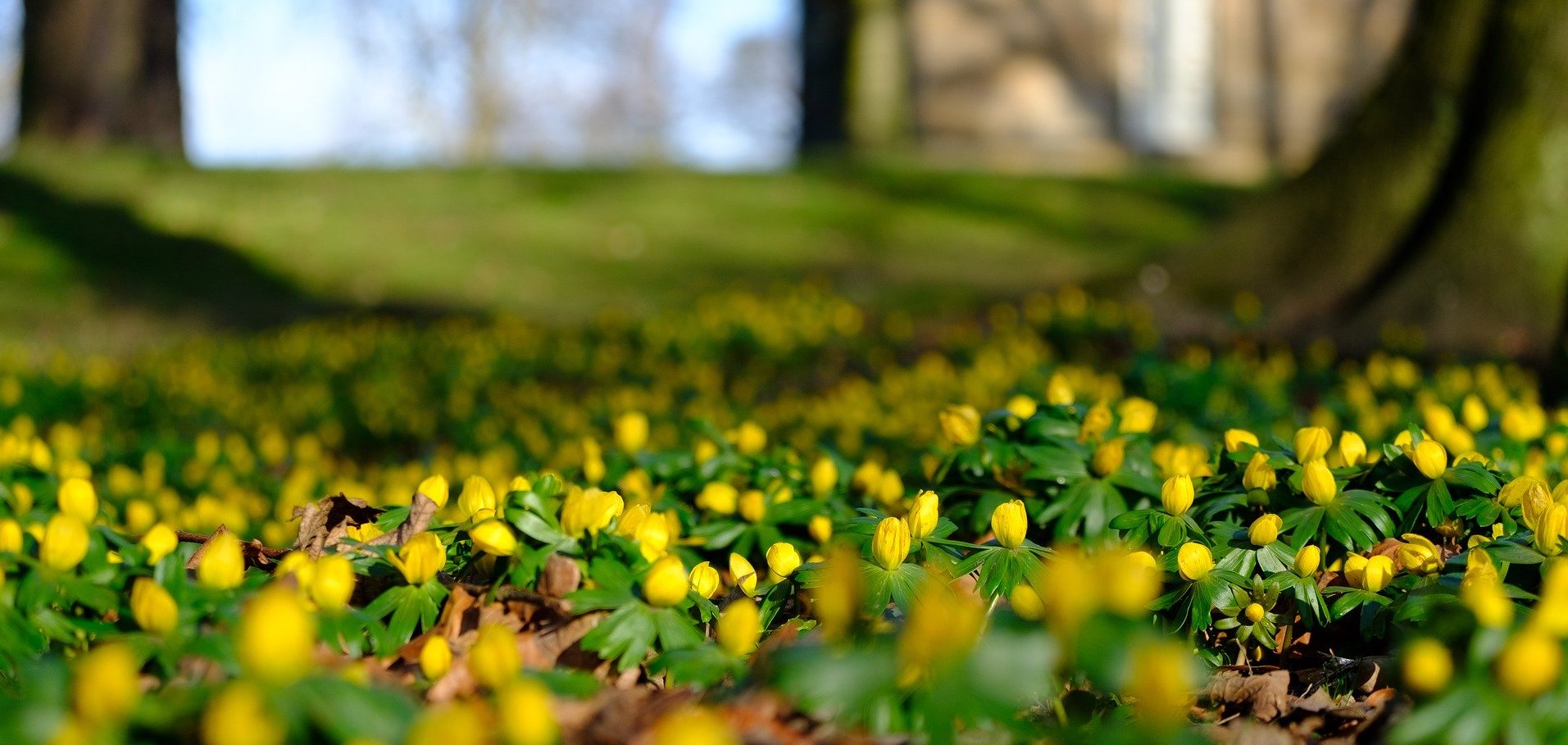
Tim Hill, Pixabay
The winter aconite is a ray of hope in the dark days of January, often flowering before the snowdrops come out. It’s easy to assume that these fragile short-lived flowers are produced by equally fragile plants, but often the reverse is true – especially when it comes to seeds. Aconite seeds need to sit in a cold damp place for several months before they can start to germinate. If you put me in a cold damp place over winter I would absolutely not flourish – in fact I would probably catch pneumonia!
A friend recently told me something I didn’t know about seeds, which her Father – who happens to be expert in tropical silviculture (forestry) – had passed on to her. I knew that some seeds need to lie in the soil for years before they can germinate, and others need to be exposed to fire, but I didn’t know that some could last longer than the trees themselves and still produce a seedling.
There is a league table of long-lived seeds that scientists have managed to coax into germinating. The winners so far are the narrow-leafed campion seeds that had been buried by squirrels in the Siberian permafrost over 30,000 years ago. The scientists who persuaded these seeds to grow didn’t just manage to produce little green shoots that died after a few days, but the plants matured and produced seeds of their own.
The Biblical link between seeds and spiritual growth is well-known: the parable of the sower being the most famous story. I’ve failed in the past to see this as a strong image. I know that seeds last a long time in the soil, and that if you dig and water a patch of earth the seeds that were hidden underground will burst into life – but I hadn’t seen past their tiny and seemingly fragile nature. My friend’s story of incredibly tough seeds made me go back to the Bible for a second look.
1 Peter 1:23 says, “For you have been born again, not of perishable seed, but of imperishable, through the living and enduring word of God.” For me, the 30,000 year-old campion plants help create a picture of what sort of longevity can be achieved with even a perishable seed – never mind an imperishable one. In 1 John 3:9 we read that “No one who is born of God will continue to sin, because God’s seed remains in them”. The word ‘remain’ takes on a new meaning when you think of those seeds hidden in a piece of fruit, buried by squirrels 38 metres below the frozen surface of Siberian soil. I suspect John had something more active in mind than a suspended state of animation: a steady germinating of faith in someone’s life, which is fed by learning, fellowship and the activity of the Holy Spirit. But this passage did start me thinking about what happens to that seed over different people’s lives.
The person who experiences something of God receives a gift which has the potential to germinate and lead to them following him wholeheartedly, resulting in a fuller life. As the parable of the sower tells in chapter 13 of Matthew, things can happen that snatch the seed away, kill it before it has finished germinating, or choke its growth. But what about the ones that get trampled, churned too deep into the earth to receive the warmth and light they need to grow? Those seeds don’t always die, but they can lie dormant, alive but inactive, until the earth is turned over. Or perhaps they’ve been snatched away by a squirrel and buried 38 metres below ground in a frozen burrow! The possibility of that experience, scrap of knowledge, or snatch of conversation resulting in a changed life may seem infinitesimally small, but it remains possible. The seed may be incredibly tough, and just waiting for a chance to grow.
The Gospel narrative plays on the fact that it took a long time for the disciples to understand the full implications of Jesus’ teaching – a germination process that took many of them three or more years. I don’t think it’s too much of stretch to draw out of the parable of the sower to include the observation that it can take a long time for people to work their way through various barriers, sticking points, phases of forgetfulness and so on. Finally they receive the encouragement, challenge, example, or whatever else it was they needed to start them down a path that ultimately leads to becoming a follower of Christ.
I want to be careful in how I let my knowledge of science inform how I interpret the Bible. If I’m adding new information that’s totally inconsistent with the mainstream of Biblical teaching, then call me out. But if science can enhance our understanding of the Bible, making its truth more vivid or easier for modern minds to understand – without adding to or taking away any of its truth – then I think we should take advantage of everything it has to offer.

© Faraday Institute
Ruth Bancewicz is Church Engagement Director at The Faraday Institute for Science and Religion. She studied Genetics at Aberdeen and Edinburgh Universities, and spent two years as a part-time postdoctoral researcher at the Wellcome Trust Centre for Cell Biology in Edinburgh, while also working as the Development Officer for Christians in Science. Ruth is a trustee of Christians in Science, and a Fellow of their US counterpart – the American Scientific Affiliation.




